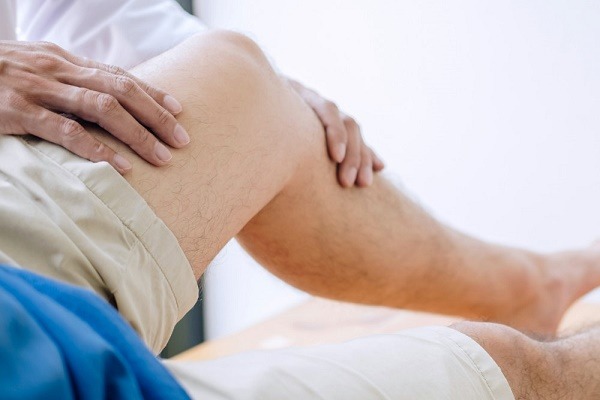Knee cartilage damage is a prevalent concern, especially among individuals engaged in physical activities or sports. The knee joint is intricate, and cartilage is essential for shock absorption and facilitating motion. However, numerous factors can lead to the deterioration of knee cartilage over time.
Examine the typical causes of knee cartilage damage and learn the treatment strategies employed by sports doctors in Singapore.
Common Causes of Knee Cartilage Damage
1. Overuse and Repetitive Motion
One of the causes of knee cartilage damage is overuse. Repeated activities, particularly those that involve constant knee stress, like running, jumping, or squatting, can gradually wear down the cartilage. Sports doctors often see athletes with this type of injury, particularly those in sports that require repetitive knee movements.
2. Acute Trauma or Injury
Acute injuries, such as falls or direct impacts to the knee, can result in prompt cartilage damage. For example, a sudden twist or impact during a football or basketball game can lead to tears in the cartilage. This injury type is likely to occur in contact sports, and many athletes seek treatment from sports doctors for acute cartilage damage.
3. Degenerative Conditions
Osteoarthritis, a degenerative joint condition, is another common cause of knee cartilage damage. This condition usually affects older individuals, but it can also be seen in younger people who have experienced previous knee injuries. The progressive breakdown of cartilage in the knee joint results in pain, stiffness, and reduced mobility. Sports doctors often work with patients to manage the symptoms and slow the progression of osteoarthritis.

4. Poor Biomechanics
Improper body mechanics, such as an abnormal gait or poor posture, can lead to uneven stress on the knee joints. This uneven distribution of force can accelerate cartilage breakdown. Sports doctors frequently assess patients’ biomechanics and offer corrective measures, such as orthotics or physical therapy, to reduce the risk of further cartilage damage.
5. Lack of Proper Conditioning
Weak muscles, particularly in the quadriceps and hamstrings, can place additional strain on the knees. Without proper conditioning and strength, the knee joint lacks adequate support, raising the likelihood of cartilage damage. Sports doctors emphasise the importance of conditioning exercises to strengthen the muscles surrounding the knee and reduce stress on the cartilage.
How Sports Doctors in Singapore Treat Knee Cartilage Damage
1. Non-Surgical Treatments
Sports doctors typically begin with conservative, non-surgical treatments for knee cartilage damage. These include:
- Physical Therapy: A tailored physical therapy program is often the initial line of treatment. It helps strengthen the muscles around the knee, enhance flexibility, and reduce pain. Sports doctors work closely with physiotherapists to create rehabilitation plans.
- Medications: Anti-inflammatory medications, such as NSAIDs, are commonly prescribed to reduce pain and swelling in the knee joint. These medications can help manage symptoms while the knee heals.
- Injections: Corticosteroid injections may be used to reduce inflammation and provide temporary relief. In some cases, hyaluronic acid injections are offered to lubricate the knee joint and enhance function.
2. Minimally Invasive Procedures
If non-surgical treatments do not provide sufficient relief, sports doctors may recommend minimally invasive procedures, such as:
- Arthroscopy: This procedure repairs or cleans out damaged cartilage. A small camera and instruments are inserted through tiny incisions, allowing the sports doctor to assess and treat the damage with minimal impact on surrounding tissues.
- Cartilage Repair or Regeneration: Sports doctors, in some cases, may perform procedures that aim to repair or regenerate damaged cartilage. These approaches may involve microfracture surgery, where tiny holes are drilled into the bone to stimulate cartilage growth, or other techniques like autologous chondrocyte implantation (ACI).
3. Surgical Intervention
Surgical intervention may be necessary when cartilage damage is painful and other treatments have already failed. Sports doctors can perform different surgical procedures to address knee cartilage damage. These include:
- Knee Cartilage Transplant: A cartilage transplant may be recommended for patients with large areas of cartilage loss. Healthy cartilage from another body part is grafted onto the damaged area in this procedure.
- Osteotomy: An osteotomy may be performed in cases where knee misalignment contributes to cartilage damage. This procedure involves cutting and reshaping the bone to realign the knee joint and reduce pressure on the damaged cartilage.
- Partial or Total Knee Replacement: In severe cases, when cartilage damage has led to significant joint deterioration, sports doctors may recommend a partial or total knee replacement. This procedure involves replacing the damaged joint surfaces with artificial components.
Conclusion
Knee cartilage damage can result from multiple factors, such as excessive use, sudden injuries, degenerative diseases, improper biomechanics, and insufficient conditioning. Sports doctors in Singapore provide different treatment options, ranging from conservative approaches like physical therapy and injections to surgical interventions. Individuals can manage knee cartilage damage and sustain a healthy, active lifestyle by obtaining prompt medical attention. If you are suffering from knee pain or discomfort, it is advisable to consult a sports doctor to discuss suitable treatment options for your condition.
Visit Auspicium Orthopaedic Centre to take the step towards knee recovery.








Comments